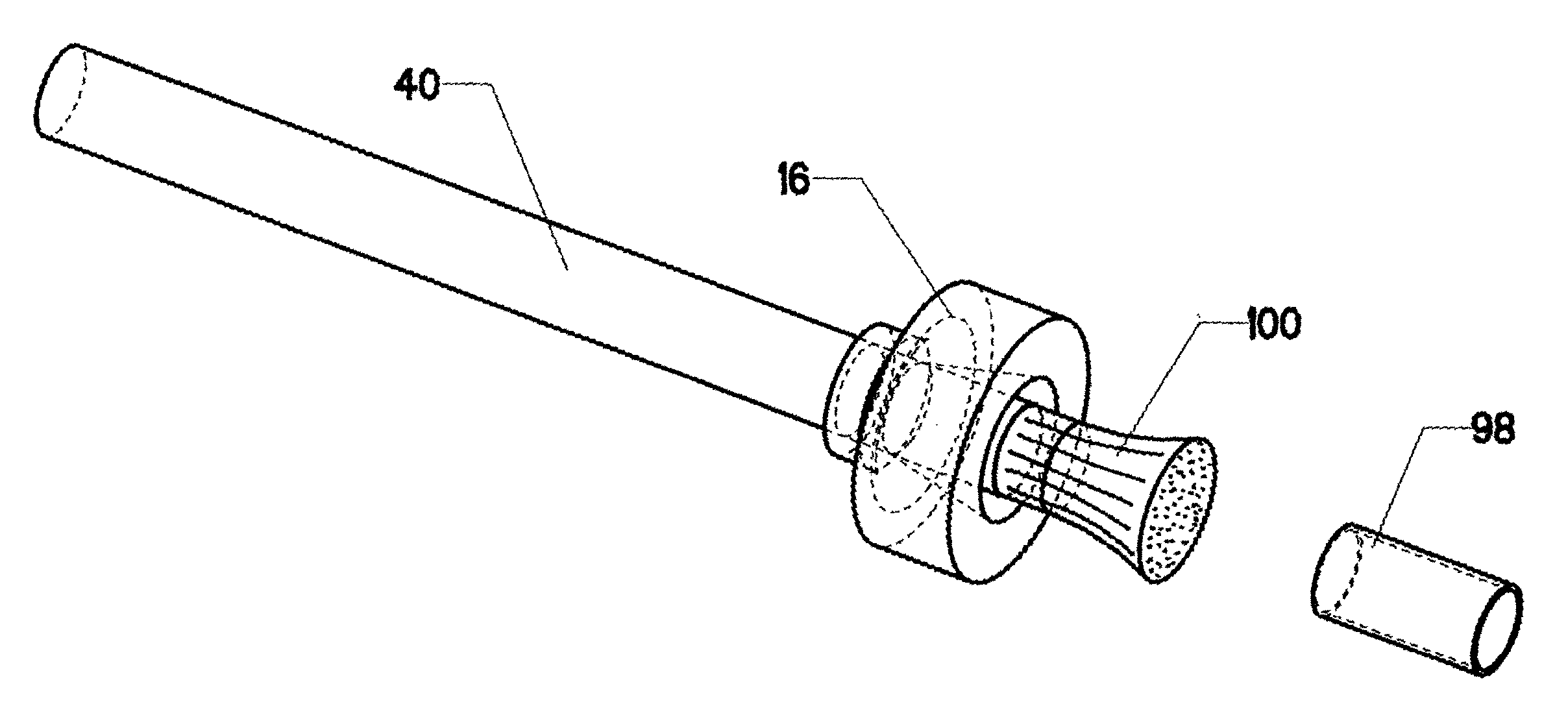Cable manufacturing method
a manufacturing method and cable technology, applied in the field of cable, can solve the problems of wire rope being susceptible to corrosion, strands may undergo plastic deformation, and rusting, and other problems, to achieve the effect of preventing rusting, preventing rusting, and preventing rusting
- Summary
- Abstract
- Description
- Claims
- Application Information
AI Technical Summary
Problems solved by technology
Method used
Image
Examples
Embodiment Construction
[0114] Central to this invention is the concept of enclosing stranded cable 10 with a manufacturing jacket in order to retain the strands comprising the cable in a desired state. Throughout this disclosure, it will be understood that the term "stranded cable" is used generally to describe a cable made of many strands having diameters smaller than the diameter of the stranded cable itself. The tem is intended to encompass wire rope (steel cable) as well. In other words, the term "strand" is used to describe cable constituents made of any substance, whether natural, synthetic, or metallic.
[0115] Additional definitions may be helpful to the reader. Within the art, the terms "cable" and "rope" are used to describe a tensile member made from a bundle of smaller tensile members. The terms are used interchangeably in this disclosure. Likewise, the terms "termination" and "anchor" are used in the art to describe an attaching element placed on a cable or rope (generally at one end, but somet...
PUM
| Property | Measurement | Unit |
|---|---|---|
| Length | aaaaa | aaaaa |
Abstract
Description
Claims
Application Information
 Login to View More
Login to View More - R&D
- Intellectual Property
- Life Sciences
- Materials
- Tech Scout
- Unparalleled Data Quality
- Higher Quality Content
- 60% Fewer Hallucinations
Browse by: Latest US Patents, China's latest patents, Technical Efficacy Thesaurus, Application Domain, Technology Topic, Popular Technical Reports.
© 2025 PatSnap. All rights reserved.Legal|Privacy policy|Modern Slavery Act Transparency Statement|Sitemap|About US| Contact US: help@patsnap.com



